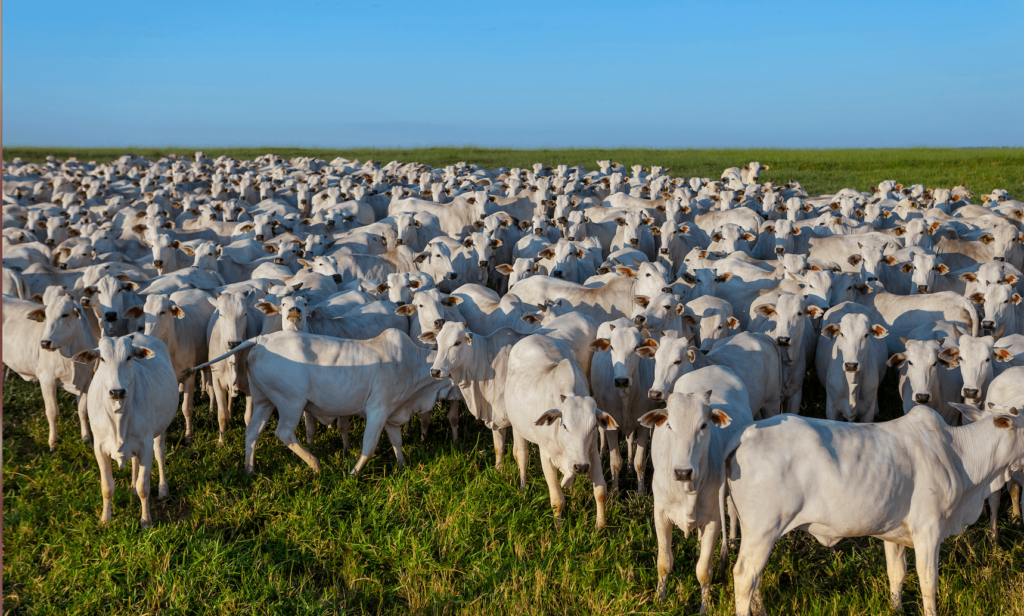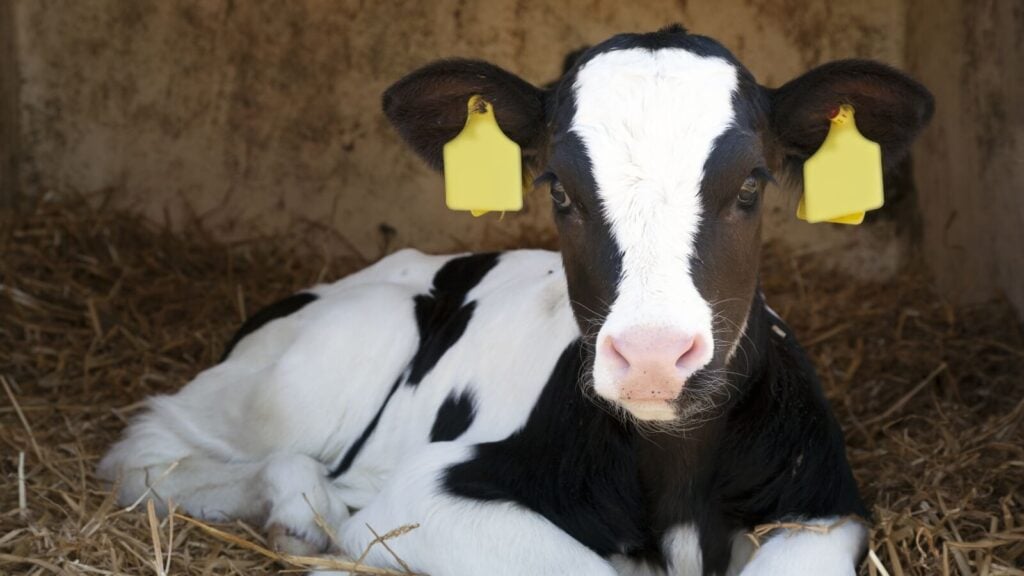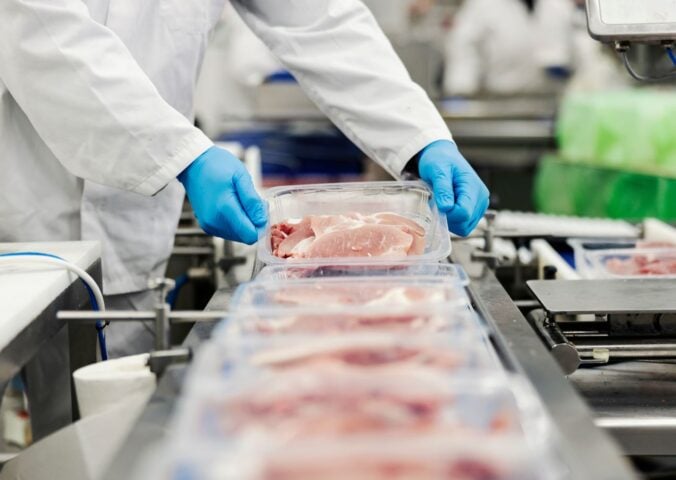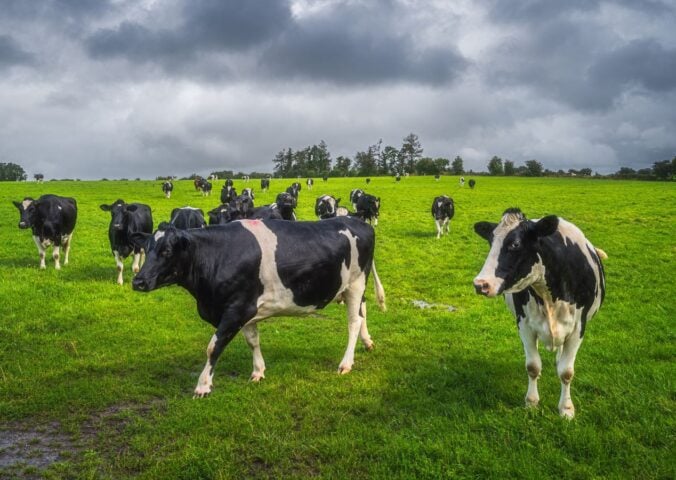When we hear about carbon dioxide and other greenhouse gases, many people think of crowded highways and smoke belching from factories. But agriculture (especially animal farming), and diet (namely, eating meat and dairy) are increasingly becoming a part of the conversation surrounding emissions. And rightly so. Mounting evidence is finding indisputable links between food production and greenhouse gases, with more than a quarter (25 to 30 percent) of global emissions stemming from our food system.
Carbon dioxide (CO2) is a leading driver of the issue. In fact, CO2 makes up the largest portion of anthropogenic (human-caused) greenhouse gas emissions, according to the Intergovernmental Panel on Climate Change (IPCC), the world’s leading authority on climate science.
So how many emissions does meat production actually produce? And is it enough that we must curb our eating habits?
What is carbon dioxide?
Carbon dioxide is an acidic colorless gas that occurs naturally in the Earth’s atmosphere. Plants absorb carbon dioxide and release oxygen, making it integral to life on Earth.
CO2 is harmless in small amounts, but human activity causes levels of the gas to surge. Writing for Forbes, chemical engineer Robert Rapier highlighted that global carbon dioxide emissions have tripled in the last 55 years, sitting at 32.3 billion metric tons in 2020.
Why is carbon dioxide harmful?
CO2 is a greenhouse gas, meaning it creates a cover that traps heat in the Earth’s atmosphere. When concentrations are too high, the planet’s carbon cycle can’t process it efficiently enough. This causes global temperatures to increase, a phenomenon known as the greenhouse effect.
Global climate breakdown has led to loss of sea ice, rising sea levels, and more frequent and severe heat waves and droughts, according to NASA. The government agency also highlights links between climate breakdown and stronger hurricanes, flash flooding, increased wildfires, erosion in coastal areas, ocean acidification, and biodiversity loss.
“The effects of human-caused global warming are happening now, are irreversible on the timescale of people alive today, and will worsen in the decades to come,” NASA sums up.
What percent of global emissions comes from livestock?

According to the Food and Agriculture Organization of the United Nations (FAO), “livestock” make up 14.5 percent of all anthropogenic emissions – 7.1 gigatonnes of CO2 equivalents (CO2-eq) per year. [What are CO2 equivalents?]
There is some debate surrounding this widely accepted figure of 14.5 percent. Research published in 2021 claims that this figure is “now out of date.” The article argues that the minimum estimate for animal agriculture’s emissions should be updated to 16.5 percent.
“Some will contest the importance of a few percentage points. Yet even the difference between 14.5 and 16.5 percent is the difference between animal agriculture being responsible for close to one in seven, or one in six of all emissions,” the article reads.
Cows raised for meat and milk are responsible for more emissions than any other non-human species, making up around 65 percent of livestock emissions, the FAO says. In 2010, a report from the FAO found that the dairy sector alone accounts for four percent of the world’s anthropogenic greenhouse gas emissions.
Food system emissions
Separate research, also from 2021, found that meat is responsible for 57 percent of all greenhouse gases from food production – nearly double that of plant-based foods (29 percent). The study’s authors looked at the entire lifecycle of food production to reach their conclusions, telling the Guardian that they were somewhat surprised at how high the emission levels were.
“You can’t just impose your views on others,” study co-author Atul Jain told the publication. “But if people are concerned about climate change, they should seriously consider changing their dietary habits.”
This sentiment has been echoed elsewhere. A webinar that took place in April 2023 highlighted the potential environmental advantages of changing what we eat. If Scotland’s capital of Edinburgh, for example, was to ditch meat and go vegan, the emissions spared would be equivalent to removing more than half a million cars from the roads. And if Stockholm did the same, the emission reduction would equal that of removing 935,000 cars.
“If we keep producing and eating the food we do today, we will not reach the Paris Agreement. The world as we know it won’t be the same,” Stockholm’s mayor Karin Wanngård commented. “Now is the time for states and cities to take a greater responsibility for the food people consume. In our city, we have nearly one million inhabitants. The schools, pre-schools, and elderly homes of Stockholm are taking a leap towards organic plant-based and locally produced food.”
Which foods have the highest carbon footprint?
In 2019, researchers published the most comprehensive analysis to date of the environmental impact of food and farming. They collected data on 38,700 farms and their supply chains, taking into consideration land use, animal feed, and the environmental costs of processing, packaging, and transporting foods, among other factors.
Researchers noted a “striking” observation: even the least environmentally harmful animal products usually exceeded the impact of vegan foods.
Food derived from cows, such as beef, cheese, and other dairy products, were identified as generating the most greenhouse gases. Meat from other animals – such as lambs, pigs, prawns, and chickens – were also linked to signifiant levels of CO2-eq.
Not all animal-free foods come with low emissions, however. Dark chocolate and coffee production, in particular, were high on the list in terms of greenhouse gas output.
Which foods have the lowest carbon footprint?
All foods tied to low emission output were plant-based, according to the meta-analysis.
Looking at supply chain emissions per kilogram of food, researchers found that while beef emits 60kg of CO2-eq, pea production generates just 1kg per kilogram of food. Even when assessing protein content, there were stark differences between animal products and vegan proteins. Per 100 grams of protein, beef was found to emit 49.89kg of CO2-eq. Lamb and mutton were responsible for just under 20kg, while farmed prawns and pigs emitted 18.19kg and 7.61kg respectively.
For context, grains emitted 2.71kg of CO2-eq per 100g of protein and soybeans emitted 1.98kg. Peas – a common ingredient in vegan meat products like Beyond Burgers – generate just 0.44kg of CO2-eq.
The following were pinpointed as the most environmentally friendly foods:
- Citrus fruit (0.39kg of CO2-eq per 100 grams of food)
- Root vegetables, like potatoes and carrots (0.43kg)
- Apples (0.43kg)
- Nuts (0.43kg)
- Onions and leeks (0.5kg)
- Bananas (0.86kg)
- Peas (0.98kg)
- Soy milk (0.98kg)
- Barley (1.2kg)
- Berries and grapes (1.5kg)
- Wheat and rye (1.6kg)
- Tomatoes (2.1kg)
- Oatmeal (2.5kg)
- Tofu (3.2kg)
- Rice (4.5kg)
Takeaway

More and more research is underscoring the impact of food production on global emissions, and therefore, the potential our diets have to mitigate the climate crisis. Beef, lamb, dairy, and shrimp are among the foods that generate the most emissions. Meanwhile, citrus fruit, root vegetables, apples, nuts, bananas, peas, and soy milk have been identified as more environmentally friendly.
Even locally produced meat is damaging to the planet, in part due to emissions. As a result, many experts are calling on governments and individuals alike to shift their diets to plant-based ones. Joseph Poore, who led the aforementioned meta-analysis, is a key example. Poore adopted a plant-based diet himself after beginning his research.
“A vegan diet is probably the single biggest way to reduce your impact on planet Earth, not just greenhouse gases, but global acidification, eutrophication, land use, and water use,” Poore said after his research was published. He added that the impact of ditching animal products is “far bigger” than flying less or opting for an electric car.
Dr. Peter Carter, an expert reviewer for the IPCC, has made similar statements. Last year, he said that in terms of fighting climate breakdown, “global veganization is now a survival imperative.”
—
What are CO2 equivalents? Carbon dioxide is not the only greenhouse gas, but it’s the chief one tied to human activity. Researchers use carbon dioxide-equivalents (CO₂eq) to better reflect all greenhouse gas emissions. To do this, greenhouse gases are weighted depending on their global warming potential (GWP), which indicates how much warming a gas creates compared to CO2. CO2 has a GWP value of one; a gas that has a GWP of 10 has ten times the warming effect of CO2.
This article was originally published on September 12, 2021. It was last updated on June 29, 2023.






